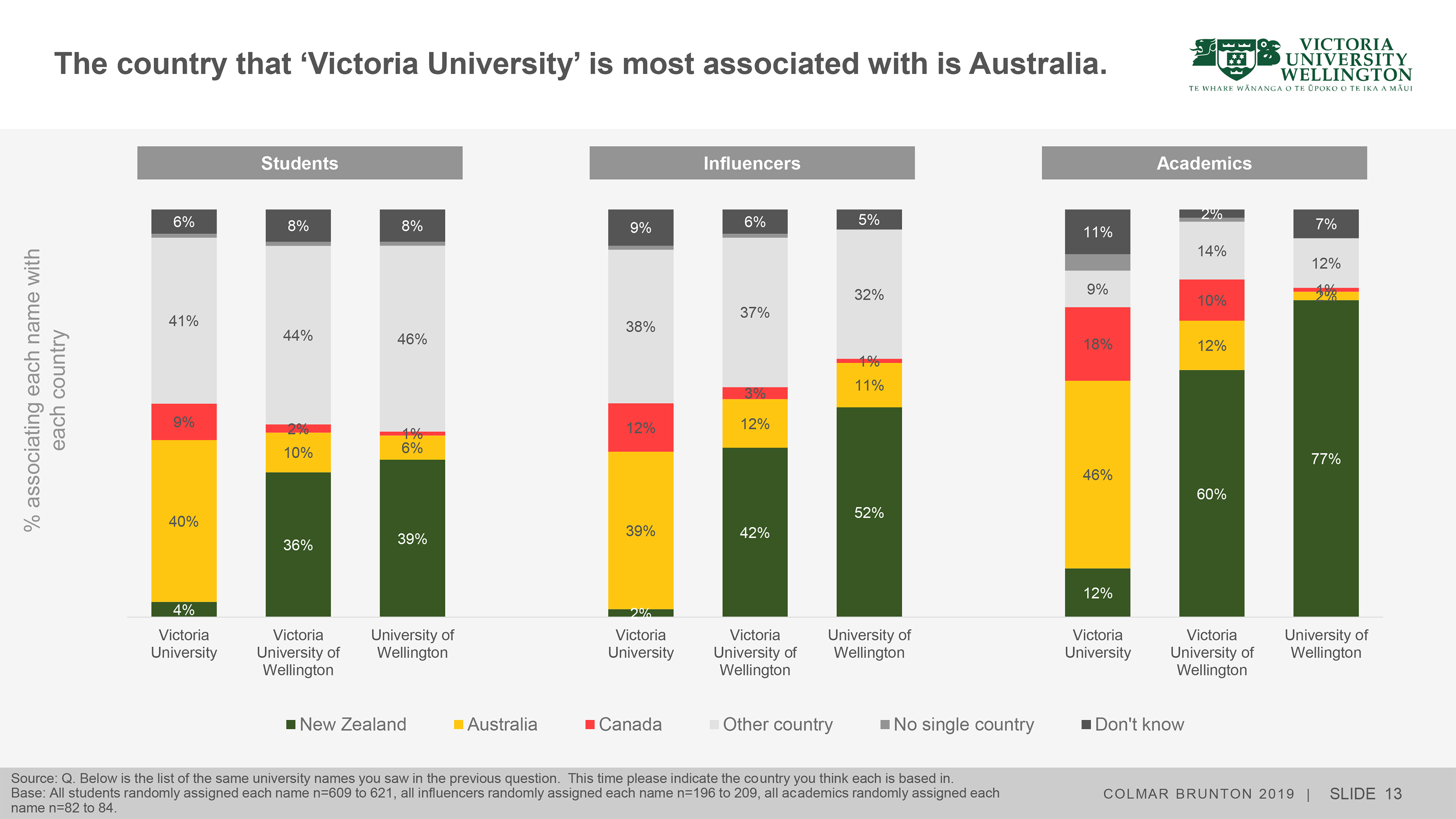From the Vice-Chancellor
A message from Vice-Chancellor Professor Grant Guilford to alumni about the University's branding refresh.
Work has started on the branding refresh recently endorsed by the University Council, which is designed to emphasise our close relationship with Wellington and help resolve offshore confusion about our identity.
The graph below, drawn from recent Colmar Brunton research, highlights how damaging it would be for the University to continue to rely on the abbreviation ‘Victoria University’ in our visual identity and narratives. The graph demonstrates how strongly the words ‘Victoria University’ associate with Australia.

View the full-sized graph
In the University’s formal communications, we will be progressively increasing the emphasis on the word ‘Wellington’, rather than ‘Victoria’. We will also be introducing a new logo in 2020 that strongly emphasises Wellington. In addition, we will change the official abbreviation used to cite the University’s qualifications from Well to Wgtn, to be consistent with how the city usually abbreviates its name.
Further down the track, we also expect to change the University’s URL or web address from www.victoria.ac.nz to one that better reflects our location in Wellington.
We would greatly appreciate the help of our alumni in dealing with this long-standing problem of our mistaken identity. You are our best ambassadors and it is your achievements, alongside those of our staff, that gradually build the international reputation of the University.
But of course, we can only bask in the reflected glow of your success if your association with Victoria University of Wellington is clear. It would be a travesty far worse than the theft of pavlova to have your success build the reputation of the Victoria University in Australia. I would encourage you to check your CVs, LinkedIn profiles and the like to make sure the references to your alma mater include the word ‘Wellington’. When citing your University qualification please use the official abbreviation Wgtn.
And when speaking about your university to those who do not know us, we would appreciate it if you used the University’s full name. If you wish to abbreviate, please include the word Wellington in the abbreviation—not the word Victoria, which when used without the word Wellington has the unfortunate effect of dissociating you from your alma mater.
Professor Grant Guilford
Vice-Chancellor
Detail of the information in the above graph
Percentage of students associating each name with each country
New Zealand | Australia | Canada | Other country | No single country | Don’t know | |
Victoria University | 4% | 40% | 9% | 41% | 1% | 6% |
Victoria University of Wellington | 36% | 10% | 2% | 44% | 1% | 8% |
University of Wellington | 39% | 6% | 1% | 46% | 1% | 8% |
Percentage of influencers associating each name with each country
New Zealand | Australia | Canada | Other country | No single country | Don’t know | |
Victoria University | 2% | 39% | 12% | 38% | 1% | 9% |
Victoria University of Wellington | 42% | 12% | 3% | 37% | 1% | 6% |
University of Wellington | 52% | 11% | 1% | 32% | 5% |
Percentage of academics associating each name with each country
New Zealand | Australia | Canada | Other country | No single country | Don’t know | |
Victoria University | 12% | 46% | 18% | 9% | 4% | 11% |
Victoria University of Wellington | 60% | 12% | 10% | 14% | 1% | 2% |
University of Wellington | 77% | 2% | 1% | 12% | 7% |
Source: Q. Below is the list of the same university names you saw in the previous question. This time please indicate the country you think each is based in.
Base: All students randomly assigned each name n=609 to 621, all influencers randomly assigned each name n=196 to 209, all academics randomly assigned each name n=82 to 84.
Please note the figures may not add to 100 percent due to rounding.
